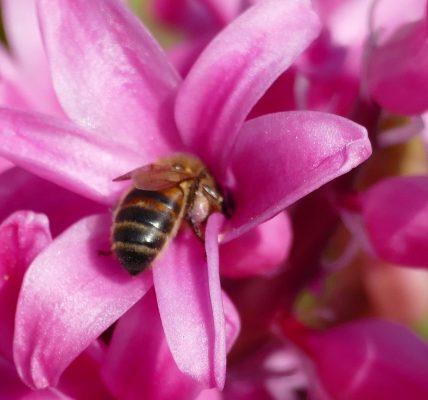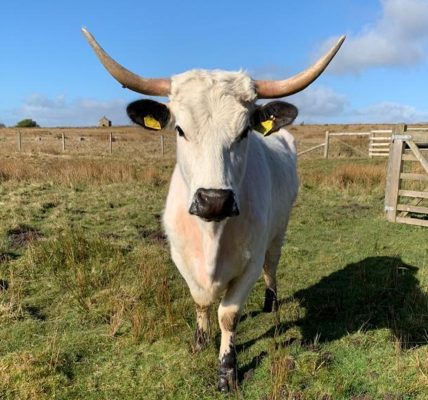Second time lucky for Bonnie and Ozzy the tawny owls as their clutch of eggs hatches at wildlife artist Robert E Fuller's Thixendale garden
Second time lucky for Bonnie and Ozzy the tawny owls as their clutch of eggs hatches at wildlife artist Robert E Fuller's Thixendale garden
I’m watching a tawny owl feed her two chicks on a screen linked to cameras hidden in her nest in woodland close to my home and gallery in Thixendale.
The owl, named Bonnie, has tucked one owlet under each wing and is meticulous in the way she shares out tiny portions. Her patience is palpable as they screech, mouths gaping wide for more.
The chicks are particularly precious to Bonnie, since her first attempt at breeding in March this year ended in tragedy after her eggs fell through the bottom of her nest.
I discovered something was wrong after watching Bonnie on my cameras in mid-April. She was scratching out a scrape ready to lay eggs.
This behaviour was very odd since she should have been busy incubating her clutch in a nest some way away from the tree where my cameras were hidden.
Tawny owls aren’t generally known to lay two clutches in a season, but her behaviour suggested that she was about to lay.
I consulted my owl books and read that occasionally tawny owls can have more than one brood in a season if their clutch is lost during the early stages of incubation.
Bonnie should have been halfway through incubation, but I wondered if something might have happened to her first clutch and went off to investigate.
As I feared, the bottom of the natural nest had fallen through. There were tooth marks which suggested that some squirrels living below had crawled up through the middle of the tree trunk and gnawed through the base of the nest.
Small fragments of eggshell in the centre of the tree trunk confirmed my worst fears.
And yet, despite being a little longer into incubation than the textbooks suggested allowed the possibility of a second brood, it looked as though Bonnie was about to lay again.
And the good news was she was about to lay inside a tree where my cameras could follow the action.
I had hidden cameras there at the beginning of January after turning what was a natural hollow in the ash tree into a safe nesting space by securing a thick slice cut from an old tree trunk across the entrance.
But although the pair had initially seemed interested in it, they had chosen to lay their eggs elsewhere.
It felt appropriate now to see Bonnie prepare this space for her new clutch. After all I had made the nest especially for her and her mate Ozzy as part of my development of their habitat, Ash Wood.
Sure enough, by late April Bonnie had laid two shiny white eggs. I watched via the hidden cameras, transfixed as the eggs appeared one by one. They were roughly three days apart.
The hollow nest is a relatively unusual construct because there is a one metre drop from the entrance into it.
I designed it this way to make sure the tawny chicks didn’t fall out once they hatched. Tawny owl chicks are notorious for trying to fledge before they are ready, and I have seen too many accidents happen like this.
And I’m glad I did because since the chicks hatched last month we’ve had some ferocious rainstorms and the deep drop has helped keep the young owlets dry.
However, it hasn’t been easy for the parent birds to land elegantly from the entrance and in the early days I would wince as I watched Bonnie crash land awkwardly close to the clutch of eggs.
Thankfully she’s much better at navigating the drop now that the chicks have hatched.
I have a microphone in the nest alongside my camera and it’s been amazing to hear the beautiful sounds these owls make as they call back and forth to one another.
When Ozzy, the male, first discovered my ash tree nest, he called out to Bonnie with a low, ocarina hoot that reverberated through the trees.
Now the noises coming from the nest are a lot louder, as the chicks clamour to be fed.
And although this is normal, I have been a bit worried at the urgency of their tone recently because Ozzy doesn’t seem to have been bringing in as much food as he ought to at this stage.
Usually, the stronger the bond between a pair, the better the male is at providing for the young when they hatch.
Bonnie and Ozzy seemed tight to begin with and I often noticed them preening one another lovingly before the eggs were laid.
Then, when Bonnie began incubating the first egg, Ozzy seemed to be very attentive, responding quickly to her calls for food.
But recently the bond seems to have become a little shaky and I’ve noticed Bonnie taking matters into her own talons, so to speak.
Recently, my cameras caught her swoop down to catch a rat and as the weeks have gone by, I’ve noticed her leave the nest to hunt more and more.
The chicks’ chances of survival reduce without a constant supply of food, so I’m hoping this is just a phase and that Ozzy will pull his socks up soon.
Tawny owls are usually excellent parents and continue to care for their young long after they have fledged so he really does need to!
I’m keeping my fingers crossed because these are the only tawny owlets I’ve been able to watch on camera for some time – the eggs of another pair living in my garden failed to hatch this year after laying whilst there was still snow on the ground.
And last year the same pair chose to nest off camera.
In the meantime, it’s a real pleasure to be able to look in on the chicks as they turn from tiny, wizened creatures into balls of fluff, and, in the weeks to come, the adventurous characters I expect them to become.










